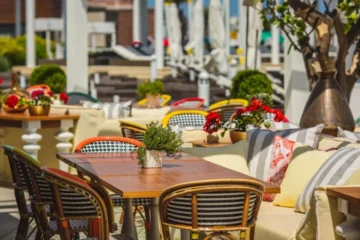In the case of dining, the initial impression may not be of the food itself but of the menu. A beautiful, user-friendly menu can dictate what is ordered, the amount spent, and how the brand is viewed. For Australian restaurants, cafes, and bars, being noticed in a crowded space is about putting money into thoughtful and innovative menu design.
Your menu is not merely a list of items—it’s a silent representative of your brand. A menu that’s well-designed mirrors your restaurant’s theme, identity, and values and helps nudge your customers’ choices. From a high-end restaurant in Sydney to a small cafe in Melbourne, your menu must be in line with your brand and the expectations of your customers.
Understanding the role of visual hierarchy
Good menu design begins with a solid visual hierarchy. This enables customers to quickly locate what they’re searching for and makes the entire experience enjoyable. Fonts, spacing, color, and headings should be used purposefully to lead the reader’s eye to high-margin products or top sellers.
Use big fonts or boxes to feature signature dishes. Make descriptions concise but seductive. Don’t pack the page, and provide some white space so the menu can feel clean and ventilated.
Australian designers tend towards minimalism for fine-dining establishments, employing clean lines and neutral color schemes. Casual restaurants, on the other hand, could opt for bright colors, playful typography, or bespoke illustrations that echo a relaxed vibe.
Print vs. digital formats
While the old printed menu remains ubiquitous for most establishments, digital menus are increasingly common in Australia. They are particularly advantageous for establishments with regularly rotating items or seasonal specials. A digital format enables updates without having to reprint and provides businesses with the freedom to play around with layout and imagery.
QR code menus also went into circulation during the pandemic, and quite a lot of restaurants retained them as a permanent solution. Nevertheless, it’s essential that the digital edition is created with the same attention and branding continuity as a printed one.
Including branding elements
A memorable menu design includes your branding throughout. This includes your logo, color palette, font style, and tone of voice. If your restaurant has a rustic feel, use textures like parchment backgrounds or hand-drawn illustrations. For modern or luxury dining, clean lines, gold accents, and monochrome palettes often work best.
By the time your customer is looking at your menu, they’re already making a judgment about your brand. Every visual and written cue should reflect what you want them to feel—whether it’s warmth, excitement, trust, or luxury.
Why it matters in the Australian market
Australia’s hospitality sector is intensely competitive. Visitors, locals, and food critics not only expect great food but also a full experience. That is why most restaurateurs and hospitality industries engage the services of people who know design as well as food culture to get the best menu design Australia can provide.
The integration of visual attractiveness and functionality is paramount. It’s not only about appearing great—it’s about making customers confident in their purchases and making the average order value grow.
A few companies also collaborate with sites such as Linkhouse to maximize digital presence, grow brand visibility, and promote their own distinctive menu design to a wider audience through outreach of content.
Final thoughts
In an age where diners are bombarded with options, a well-crafted menu has the ability to leave a lasting impression. It’s not merely an order-taker—it’s a branding platform, a marketing tool, and a key component of the customer experience.
Whether you’re launching a new venue or revamping an existing one, investing in high-quality menu design is a smart move. It can elevate your brand, influence purchasing behavior, and set your business apart in the vibrant and competitive Australian dining scene.


